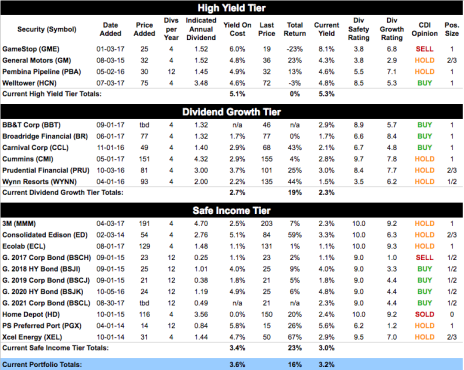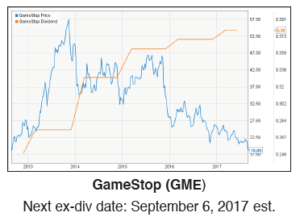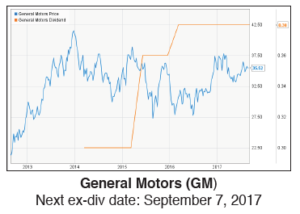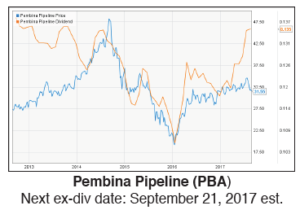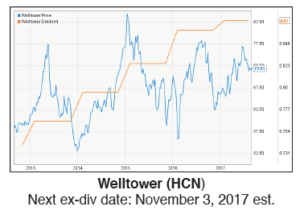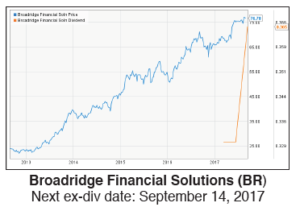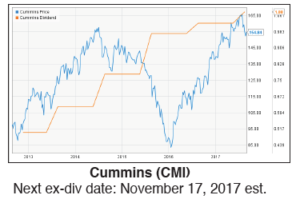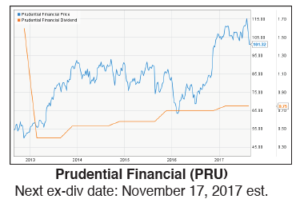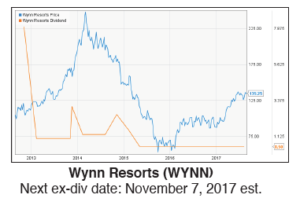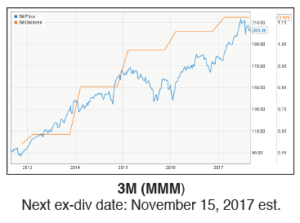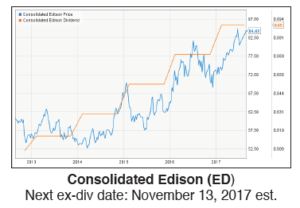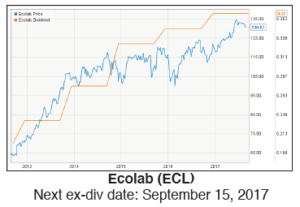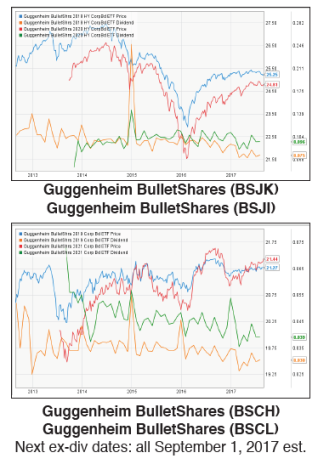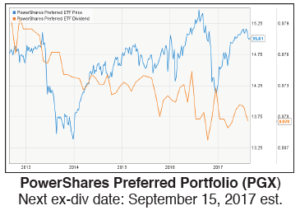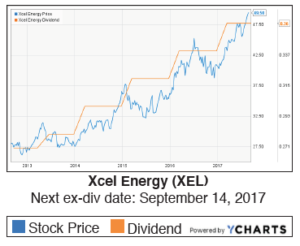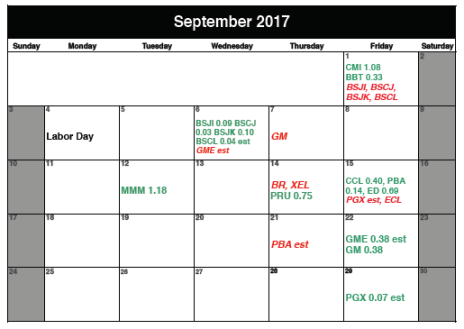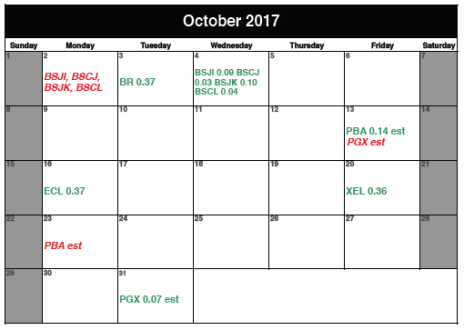We’re trimming our portfolio a little further, and adding a healthy new financial stock to the Dividend Growth Tier.
Cabot Dividend Investor 817
[premium_html_toc post_id="138026"]
No Man’s Land
Stock market volume has been very light all week, as traders soak up the last rays of summer sunshine—away from the office. The major indexes have traded mostly flat over the past five days, with the Nasdaq once again performing slightly better than the Dow and S&P 500. In other words, not much has changed.
[highlight_box]What To Do Now: The market remains in No Man’s Land, not quite recovered but not falling apart either. So, we’ll continue to fence-sit, advising that you keep your buying conservative and sell your laggards.
Today, that means selling GameStop (GME), which is hitting new 52-week lows. Our recommendation of GME was a higher-risk bet on a deeply discounted, high-yielding stock. As sometimes happens in those situations, the turnaround is taking too long, and getting too expensive, for us to continue waiting.
We’re also selling our 2017 bond fund today, and reinvesting in a 2021 fund to keep our bond ladder intact.
Lastly, I’m adding another financial stock to the Dividend Growth Tier. Profiled below, the company is a well-diversified financial holding company that offers a nice mix of growth and income. It will also help us maintain exposure to the financial sector if we have to sell Prudential (PRU) soon. [/highlight_box]
Featured Buy
BB&T Corp. (BBT)
This month, I’m adding a conservative regional banking stock with solid earnings growth expectations to the Dividend Growth Tier. The stock is likely relatively early in its uptrend, and has generous but sustainable dividend yield of 2.9%.
The Company
Headquartered in Winston-Salem, North Carolina, BB&T has banks in 15 states and Washington, D.C. The company provides traditional regional banking services and also owns two retail brokerages, an investment advisor and seven insurance companies.
In the aftermath of the financial crisis, BB&T weighted its portfolio toward commercial lending, both reducing the size of and improving the credit quality of its mortgage portfolio. The strongest growth now comes from corporate loans, recreational vehicle loans, commercial mortgages and wealth management. The company is also improving efficiency by closing some underperforming branches.
Analysts expect revenue will increase 6% this year and 4% next year. EPS are expected to rise 3% this year, and 23% next year. Over the next five years, analysts expect EPS growth to average about 6% per year. Estimates for both this year and next have been steadily rising over the past three months.
The Dividend
BBT pays a quarterly dividend of 33 cents per share, for a current yield of 2.9%. BB&T has paid dividends since 1987 and has a payout ratio of 42%, earning the stock a Dividend Safety Rating of 8.9 out of 10. The company has increased the dividend every year since 2011, by an average of 8% per year. Combined with analysts’ positive earnings expectations, that earns BBT a Dividend Growth Rating of 5.7 out of 10.
The Stock
BBT is currently trading at a reasonable P/E of 17, and a forward P/E of 15.
After trading sideways for most of 2014 and 2015, BBT corrected sharply at the start of 2016, then began a sustainable new uptrend that brought the stock from 30 to 40. BBT ended the year with a 22% post-election gain, as expectations of regulatory rollback rose. However, that “Trump Trade” began to fail early in 2017, and financials slumped. BBT corrected about 10%, bottoming at the end of May.
Summer saw the stock return to its long-term trend, and a solid advance from 42 to 49. The stock has been outperforming the financial sector since the start of summer, rising 9% vs. the XLF’s 5% gain. Bank stocks pulled back again this month, and BBT is now sitting right above its 50-day moving average, with its 200-day not far behind. This looks like a good buying opportunity for medium- to long-term investors.
Ideally, the stock will resume its uptrend during the next market advance, and soon push out to new highs above 50. From there, the sky is the limit. If we get a market correction instead, BBT might find support at its 200-day moving average, currently at 45. Otherwise, the stock could correct as far as 42, where it bottomed in May, which still limits our loss to a fairly reasonable 8%.
I’ll be adding BBT to the Dividend Growth Tier at the stock’s average price on Friday, September 1. Investors looking for a combination of conservative growth, medium-high yield and steady dividend increases and can do the same.
| BB&T Corp. (BBT) | ||
|---|---|---|
| Price: 46 52-week range: 36.80-49.88 Market cap: $36.38 billion P/E: 17 | Current yield: 2.9% Annual dividend: $1.32 Most recent dividend: $0.33 Dividend Safety rating: 8.9 Dividend Growth rating: 5.7 | |
| Dividends since: 1987 Consecutive years of increases: 5 Qualified dividends? Yes | Payment Schedule: Quarterly Next ex-dividend date: November 8, 2017 est. | |
Portfolio at a Glance
Closing Prices on August 29, 2017
Portfolio Updates
High Yield Tier
The investments in our High Yield tier have been chosen for their high current payouts. These ?investments will often be riskier or have less capital appreciation potential than those in our other ?two tiers, but they’re appropriate for investors who want to generate maximum income from their? portfolios right now.
SELL – GameStop (GME 19 – yield 8.1%) – Our loss in GME has ballooned to 23% following the stock’s post-earnings drop last week, and it’s time to cut our losses. As I wrote in Friday’s Special Bulletin, GameStop reported solid results overall, but EPS missed estimates by one cent. Investors punished the stock harshly, sending GME to a new 52-week low. The reaction was not entirely surprising—GME also gapped down after its last two earnings reports, despite beating expectations. But that’s not to say it’s not concerning: clearly sellers have the upper hand here, and their downward pressure on the stock keeps winning out, regardless of results. On top of that, GME just broke through its last remaining support level decisively. Given the downward momentum and the lack of support, losses could easily get much bigger here, and we’re already just about at our limit. Yes, the second half of the year could bring some potential catalysts for improvement, including a new iPhone and more Nintendo Switches in stock, but it could also bring negative surprises, like even easier ways for consumers to download games digitally. Most important though, we’ve run out of rope, so we don’t want to stick around to find out. We’ll Sell GME at today’s average price.
HOLD – General Motors (GM 36 – yield 4.3%) – GM is back above its 50- and 200-day moving averages this week, although volume has been very low all month. The company is the healthiest U.S. automaker: GM began reducing margin-destroying fleet sales before competitors, and has spent the last two years beefing up its crossover lineup while cutting small car production. It’s all working … but it might not be enough. U.S. auto sales are declining, and average prices just declined for a sixth straight month, indicating that automakers are discounting to lure customers. That’s good news for car buyers, but bad news for the industry. GM looks okay today, and remains a decent Hold for high yield investors, but if we see a real correction start, it could be on the chopping block.
HOLD – Pembina Pipeline (PBA 32 – yield 4.6%) – PBA remains below its 50- and 200-day moving averages, but within its trading range from earlier this year. (As noted during the last few weeks’ pullback, it’s looking increasingly like July’s push to new highs was a failed breakout.) The Canadian pipeline company generates predictable cash flow and pays very reliable monthly dividends (they are paid in Canadian dollars, so if you’re buying the NYSE listing the amount will vary slightly due to exchange rates.) Plus, Pembina completed a major merger and a number of infrastructure projects earlier this year, which are contributing to strong earnings growth. That should translate into upside for the stock once the market is more supportive. Hold.
BUY – Welltower (HCN 72 – yield 4.8%) – HCN has found solid support right above its 200-day moving average, after correcting about 8%. Unfortunately, health care REITs have begun lagging the rest of the real estate sector, which is otherwise strong these days. The underperformance is probably related to political uncertainty, since these companies’ tenants depend on reimbursements from health insurers and Medicaid/Medicare for most of their revenue. But Washington-linked trades can change quickly, especially these days. (HCN and its peers were outperforming the rest of the REIT sector until the end of July.) I think risk-tolerant high yield investors can buy a little here.
Dividend Growth Tier
To be chosen for the Dividend Growth tier, investments must have a strong history of dividend increases and indicate both good potential for and high prioritization of continued dividend growth.
BUY – Broadridge Financial Solutions (BR 77 – yield 1.7%) – BR looks healthy. The company provides information, technology and services to banks, asset managers and other financial companies. The stock is trading in a tight range above its 50-day moving average, within a few cents of all-time highs. A breakout to new highs above 78 looks likely once the market improves (and would be very bullish). Dividend growth investors can buy a little here.
BUY – Carnival (CCL 68 – yield 2.1%) – CCL also looks healthy, and is also buyable here. The stock hasn’t made much progress over the past month, but that’s okay, since there’s no sign of selling pressure (it’s also August). Another advance looks likely once the market improves and the stock’s 50-day moving average, currently at 67, catches up. Carnival will report third-quarter earnings at the end of September (the company’s fiscal year ends in November). The company has beaten analysts’ earnings estimates in each of the last four quarters, and is expected to deliver 5% revenue growth and 8% EPS growth this year. Cruise demand is growing steadily in both the U.S. and abroad, boosting Carnival’s booking volumes and ticket prices year-over-year.
HOLD – Cummins (CMI 155 – yield 2.8%) – Support at CMI’s 200-day moving average is holding, and we’ll do the same. While CMI isn’t our strongest stock, the stock’s 9% pullback from its late-July high still falls into normal correction territory. If all is well, the stock will bounce here, and CMI’s long-term uptrend will resume once the market strengthens. Hold.
HOLD – Prudential Financial (PRU 101 – yield 3.0%) – PRU remains unimpressive, without exactly giving us enough reason to dump it. We have a 25% profit cushion, and already took some gains off the table back in November. Short term, momentum is terrible, but longer-term PRU still looks okay. Earnings estimates for this year have declined, but estimates for next year are rising. The stock was lagging the rest of the financials all month, but has outperformed them over the past week. In other words, we could still go either way. I’m adding another financial stock to the Dividend Growth Tier today in part to make selling easier, if that turns out to be the right call. But for now, we’ll hold.
HOLD – Wynn Resorts (WYNN 135 – yield 1.5%) – WYNN is back above its 50-day moving average but continues to move sideways. This month’s results from Macau are expected to be negatively impacted by the recent typhoon that battered the city, but the stock hasn’t reacted strongly. The longer-term picture remains bright, EPS estimates for this year and next have both moved up in recent months (2017 and 2018 EPS are now expected to grow by 45% and 23%, respectively). Dividend growth investors can hold.
Safe Income Tier
The Safe Income tier of our portfolio holds long-term positions in high-quality stocks and other investments that generate steady income with minimal volatility and low risk. These positions are appropriate for all investors, but are meant to be held for the long term, primarily for income—don’t buy these thinking you’ll double your money in a year.
HOLD – 3M (MMM 203 – yield 2.3%) – MMM is slumping once again. After gapping down on earnings in late July, the stock rallied into resistance at its 50-day, and then turned down again last week. However, MMM is still only 5% off its highs, and its longer-term uptrend is intact (and the dividend remains iron-clad.) We’ll continue to Hold until the stock sends us a stronger signal one way or the other.
HOLD – Consolidated Edison (ED 84 – yield 3.3%) – ED gained 0.6% over the past week, bringing the utility’s gain for the past month to 2.5%. Most of that is thanks to a rotation into utilities, which attract investors whenever uncertainty looms (especially when fixed income yields remain low). The stock is now back at its all-time highs from June. Safe income investors can continue to hold.
HOLD – Ecolab (ECL 131 – yield 1.1%) – ECL continues to drift lower, but it’s still only 2.6% off its highs. I’m not too worried about it; earnings expectations are firm the stock is hardly overextended. Investors interested in slow-but-steady dividend growth, long-term gains and reliable income can continue to hold.
SELL – Guggenheim BulletShares 2017 Corporate Bond ETF (BSCH 23 – yield 1.1%)
BUY – Guggenheim BulletShares 2018 High Yield Corporate Bond ETF (BSJI 25 – yield 4.0%)
BUY – Guggenheim BulletShares 2019 Corporate Bond ETF (BSCJ 21 – yield 1.8%)
BUY – Guggenheim BulletShares 2020 High Yield Corporate Bond ETF (BSJK 25 – yield 4.8%)
BUY – Guggenheim BulletShares 2021 Corporate Bond ETF (BSCL 21 – yield 2.4%)
As the end of the year approaches and 2017 bonds mature, the yield on our 2017 bond fund is slowly declining, so we’re going to sell BSCH today, and replace it with the Guggenheim BulletShares 2021 Corporate Bond ETF (BSCL) to keep our bond ladder intact. We’ll add a half position in BSCL, as we’ve done for the other funds in the ladder (each position is half our normal size so the bond ladder, which is made up of four funds, isn’t too large a portion of our portfolio). The new fund yields 2.3% at today’s price and pays distributions monthly, like the rest of the BulletShares ETFs. Of course, if you’d rather take on (slightly) more risk and build a higher-yielding bond ladder, you can buy the 2021 High Yield ETF instead, its symbol is BSJL.
SOLD – Home Depot (HD 150 – yield 2.4%) – We sold HD at 150 early this month, for a 30% profit. Combined with our original half-sale in November (for a small profit) our total return was 20%. The stock has chopped around since then but is now back at 150. Earnings, released August 15, were good, but technically the stock hasn’t improved at all. If you’re still holding, I recommend you sell now.
HOLD – PowerShares Preferred Portfolio (PGX 15 – yield 5.6%) – PGX is a Hold for investors who want reliable monthly income. The preferred share ETF doesn’t have capital appreciation potential, but it trades in a low-volatility range between 14 and 16 and pays monthly dividends of about seven cents per share.
HOLD – Xcel Energy (XEL 50 – yield 2.9%) – XEL continues to hit new all-time highs as investors reducing risk rotate into utilities. I prefer to buy long-term, conservative holdings like Xcel when they are less popular, so Hold remains the appropriate rating for now.
Dividend Calendar
Ex-Dividend Dates are in RED and italics. Dividend Payments Dates are in GREEN. See the Guide to Cabot Dividend Investor for an explanation of how dates are determined and what estimated dates mean.
When Are Dividends Qualified?
One of the things many investors like best about dividend income is that it can qualify for the lower Federal capital gains tax rate. For investors in the 25% to 35% marginal tax bracket, that’s 15%, and for those in lower brackets it’s 0%.
But not all dividends and distributions qualify. And there are even some situations in which you might receive non-qualified dividends from a qualified company. You can always wait until you get your tax documents at the end of the year to find out how your dividends were classified, but most investors would like to know ahead of time.
Luckily there are some simple questions to ask that will help you figure out if your dividends are qualified. (Please note that I am not an accountant or tax advisor and have covered only some of the most common tax situations, so I suggest you also talk to your accountant or financial advisor about your own personal tax situation.)
Who Paid the Dividend?
Most dividends paid by U.S. corporations will qualify for favorable tax treatment. In addition, dividends paid by corporations based in countries with which the U.S. has a tax treaty can qualify.
Dividends paid by businesses organized in some structure other than a corporation usually don’t qualify. Examples include Real Estate Investment Trusts (REITs), Master Limited Partnerships (MLPs) and Business Development Companies (BDCs) and other Regulated Investment Companies (RICs). Their distributions may include some qualified dividend income, but will usually also include some return of capital or ordinary income.
How Long Have You Owned the Stock?
While many companies are “qualified” dividend payers under U.S. tax law, you also have your own end of the bargain to hold up.
In order for your dividends to qualify for the capital gains tax rate, you must have held the stock for more than 60 days including the ex-dividend date. That gives you a 121-day window in which your 60-day holding period can fall.
For example, in the Dividend Calendar, you can see that Broadridge (BR) has set September 14 as their next ex-dividend date. So September 13 is the last day to buy to be eligible to receive the next dividend. If you buy on September 13, you have to hold at least 60 days, or until November 12, for your dividend payment to qualify for the capital gains tax rate. If you sell before November 12, you’ll owe income taxes at your regular rate.
What About Funds?
Distributions paid by mutual funds, ETFs and CEFs can be qualified or non-qualified, depending on how the fund earned the cash. Often, fund distributions will be made up of money from different sources, and the fund will let you know what percentage was qualified dividend income at the end of the year.
If you want to get an idea of how the dividends are likely to be treated before then, you can look at how the fund’s past-year distributions have been categorized. You can also look at how the fund earns its money, but you may still be surprised at year-end. Even if a fund owns entirely qualified dividend payers, for example, it may not have met the holding period requirements for all stocks.
Other Taxes You Might Owe
Even if your dividends qualify for the capital gains tax rate, you may find you owe other taxes on them as well.
Dividends paid by qualified foreign corporations may still be subject to withholding taxes in the company’s home country. American subscribers who received Pembina Pipeline’s latest dividend, for example, likely saw a 15% tax withheld by Canada. However, you can claim the full amount of the withholding as a tax credit in the U.S. at the end of the year, as long as you own the shares in a taxable account. (It will be reported on your 1099-DIV as foreign tax paid.) Some countries, like the Bahamas, have no withholding tax.
If you live outside the U.S., you may also find yourself paying more taxes on your dividend income. A subscriber from Italy says his government takes another 22% of his income from dividends paid by U.S. and Canadian companies, for example.
Lastly, note that, like ordinary income, dividend income that falls into the 15% or lower tax bracket is tax free. Only the marginal amount is taxed at the higher rate.
There are more details on the tax consequences of holding REITs, MLPs and other special types of income-generating securities in your Complete Retirement Income Guide and Ultimate Guide to MLPs on the Cabot Dividend Investor website.
[premium_html_footer]
Your next issue will be published September 27, 2017
Cabot Wealth Network • 176 North Street • Salem MA 01970 • 978-745-5532
Neither Cabot Wealth Network nor our employees are compensated by the companies whose stocks we recommend. Sources of information are believed to be reliable, but are in no way guaranteed to be complete or without error. Recommendations, opinions or suggestions are given with the understanding that subscribers acting on the information assume all risks. © Cabot Wealth Network. Copying and/or electronic transmission of this report is a violation of U.S. copyright law. For the protection of our subscribers, if copyright laws are violated, the subscription will be terminated. To subscribe or for information on our privacy policy, call 978-745-5532, visit www.cabotwealth.com or write to support@cabotwealth.com.
[/premium_html_footer]


